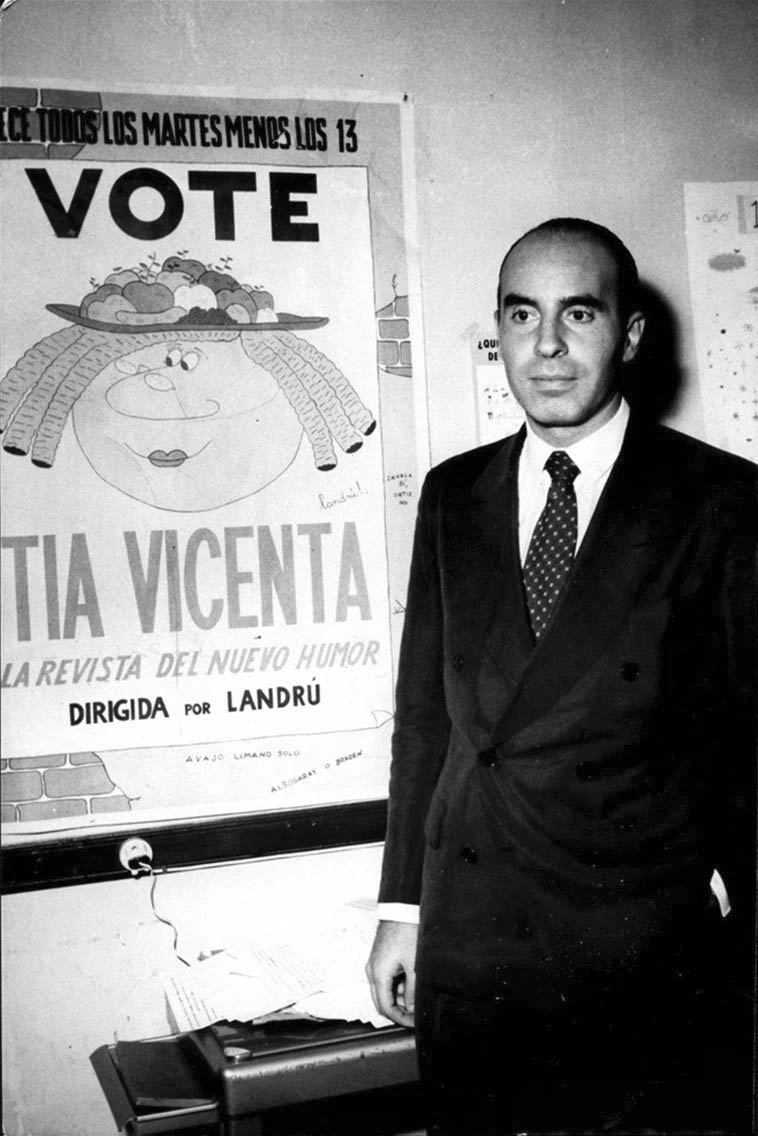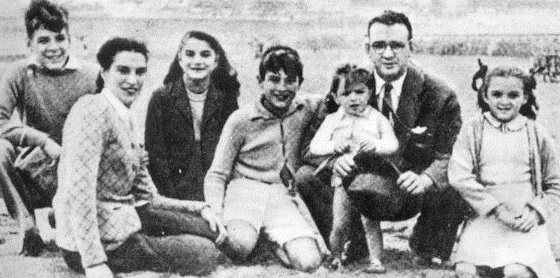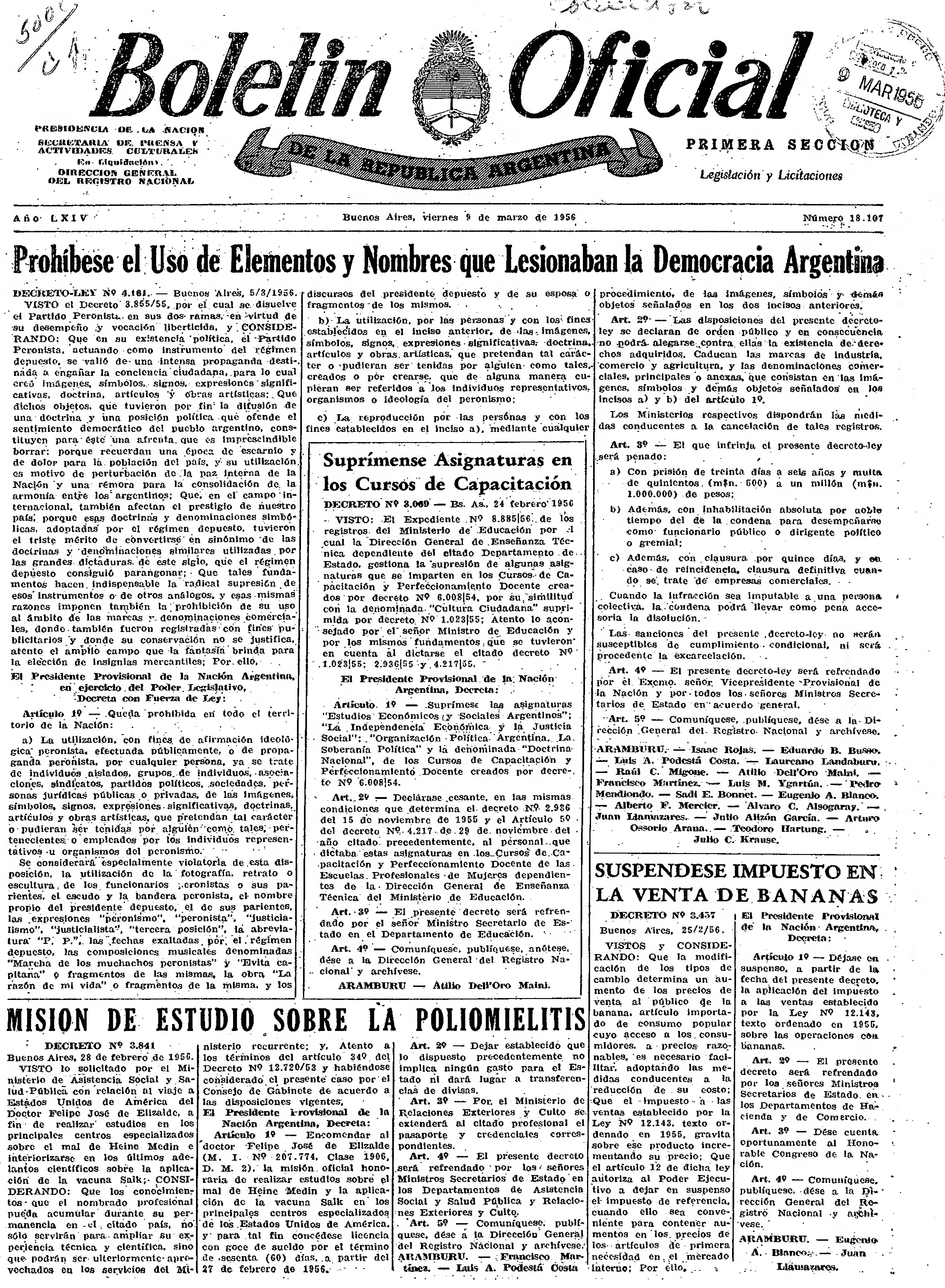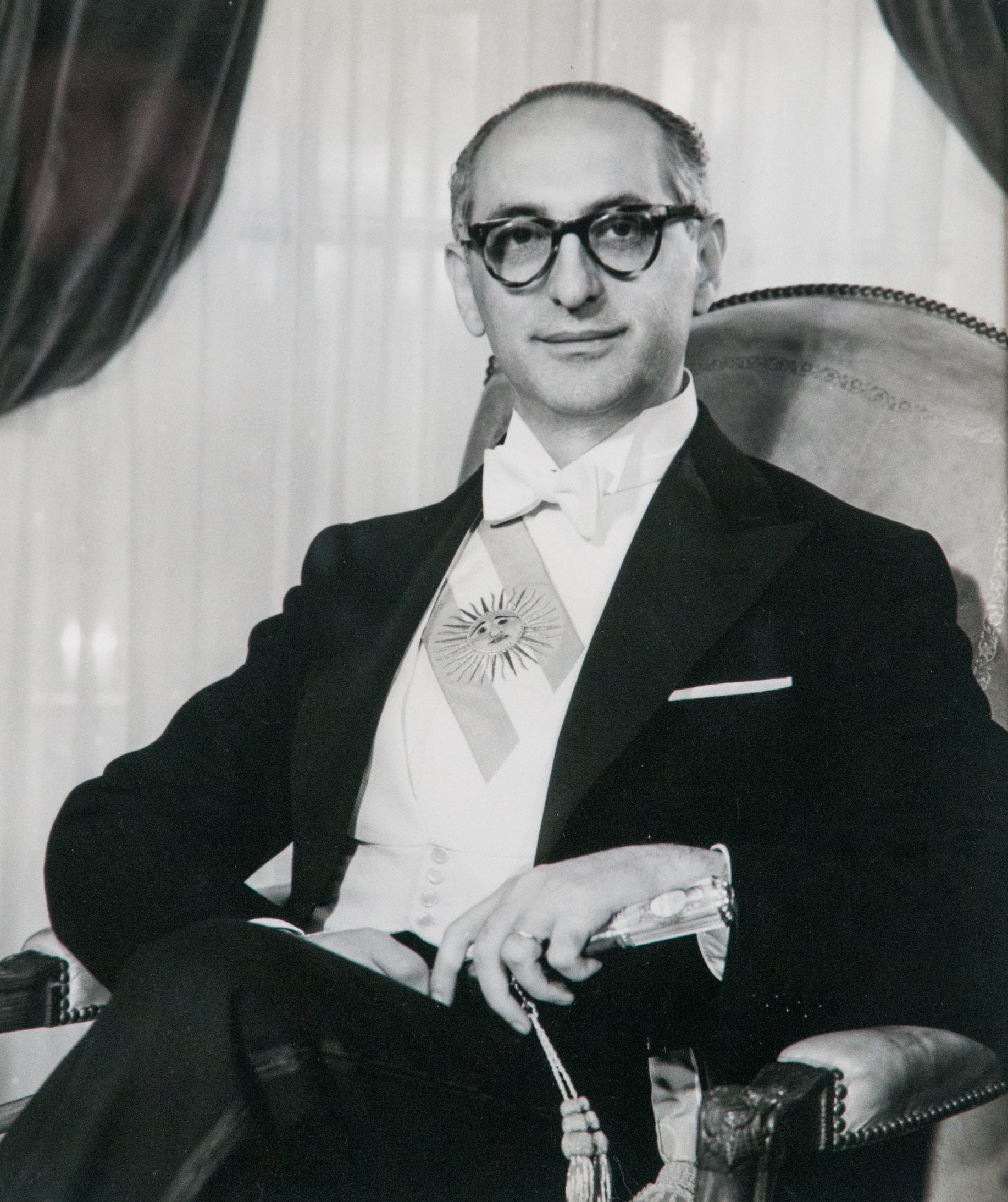|
Tía Vicenta
''Tía Vicenta'' ("Aunt Vicenta") was a satirical current events magazine published in Argentina between 1957 and 1966. Created by caricature artist Juan Carlos Colombres, aka "Landrú", ''Tía Vicenta'' became highly popular, being one of the most influential magazines of its genre.La revista (historia) by Landrú on Tía Vicenta website (archived, 13 Jul 2017) In 1970, the magazine was regarded as one of the six best political and military humor magazines in the world. Editorial Haynes published the magazine as a supplement to ''El Mundo (Argentina), El Mundo'' newspaper, with 500,000 copies printed. After then ''de facto'' president of Argentina Juan Carlos Onganía was depicted as a ''walrus'' (a nickname given due to his big moustache), the dictatorship closed the magazine in July 1966 ... [...More Info...] [...Related Items...] OR: [Wikipedia] [Google] [Baidu] |
Che Guevara
Ernesto "Che" Guevara (14th May 1928 – 9 October 1967) was an Argentines, Argentine Communist revolution, Marxist revolutionary, physician, author, Guerrilla warfare, guerrilla leader, diplomat, and Military theory, military theorist. A major figure of the Cuban Revolution, his stylized visage has become a ubiquitous Counterculture of the 1960s, countercultural symbol of rebellion and global insignia Che Guevara in popular culture, in popular culture. As a young medical student, Guevara travelled throughout South America and was appalled by the poverty, hunger, and disease he witnessed.On Revolutionary Medicine Speech by Che Guevara to the Cuban Militia on 19 August 1960. "Because of the circumstances in which I traveled, first as a student and later as a doctor, I came into close contact with poverty, hunger a ... [...More Info...] [...Related Items...] OR: [Wikipedia] [Google] [Baidu] |
Decree Law 4161/56
Decree Law 4161/56 () was an Argentine government decree designed to suppress Peronist sentiment among the Argentine people. Enacted on 5 March 1956, six months after the 1955 overthrow of President Juan Perón in the ''Revolución Libertadora'', the decree instituted a wide-ranging ban on any "affirmation of Peronism" under the government of Pedro Eugenio Aramburu. Decree Law 4161/56 The decree officially outlawed the "affirmation of Peronism, publicly performed, or Peronist propaganda, by any person, whether by individuals or groups of individuals, associations, unions, political parties, corporations, legal entities of public or private images, symbols, signs, significant expressions, items and artwork doctrines, intending genuine or could be taken by anyone as such owned or used by individuals or bodies representative of Peronism." Violation of the decree was punishable by a prison sentence of 30 days to 6 years. Additionally, offenders were subject to a fine ranging from 5 ... [...More Info...] [...Related Items...] OR: [Wikipedia] [Google] [Baidu] |
Surreal Humor
Surreal humour (also called surreal comedy, absurdist humour, or absurdist comedy) is a form of humour predicated on deliberate violations of causal reasoning, thus producing events and behaviors that are obviously illogical. Portrayals of surreal humour tend to involve bizarre juxtapositions, incongruity, non-sequiturs, irrational or absurd situations, and expressions of nonsense. Surreal humour grew out of surrealism, a cultural movement developed in the 20th century by French and Belgian artists, who depicted unnerving and illogical scenes while developing techniques to allow the unconscious mind to express itself. The movement itself was foreshadowed by English writers in the 19th century, most notably Lewis Carroll and Edward Lear. The humour in surreal comedy arises from a subversion of audience expectations, emphasizing the ridiculousness and unlikeliness of a situation, so that amusement is founded on an unpredictability that is separate from a logical analysis of ... [...More Info...] [...Related Items...] OR: [Wikipedia] [Google] [Baidu] |
María Elena Walsh
María Elena Walsh (1 February 1930 – 10 January 2011) was an Argentine poet, novelist, musician, playwright, writer and composer, mainly known for her songs and books for children. Her work includes many of the most popular children's books and songs of all time in her home country. Biography María Elena Walsh was born in Villa Sarmiento, Morón, Greater Buenos Aires, to a railway worker of Irish descent who played the piano, and a woman of Spanish descent. As a child, she lived in a big house, where she greatly enjoyed reading and listening to music in a cultural environment. When she was 15, Walsh had some of her poems published in ''El Hogar'' (magazine) and ''La Nación'' (newspaper). In 1947, before graduating from art school, she published her first book, ''Otoño Imperdonable'', a collection of poems that was critically acclaimed and received recognition from important Latin American writers. After graduation in 1948, she traveled to North America at the invitat ... [...More Info...] [...Related Items...] OR: [Wikipedia] [Google] [Baidu] |
Hermenegildo Sábat
Hermenegildo Sábat (23 June 1933 – 2 October 2018) was an Argentine-Uruguayan caricaturist. Life and work Early career in journalism Hermenegildo Sábat was born in the oceanfront Pocitos section of Montevideo, Uruguay, in 1933. Named after a grandparent who had been a noted local artist in his day, Hermenegildo was known as "Menchi," from early childhood. Montevideo's leading news daily, ''El País'', first published a drawing of his - a portrait of Uruguay national football team forward Juan Schiaffino - when the young artist was but 15 years old. Sábat's first work experience in journalism began in 1955 as a graphist in ''Acción'', returning to ''El País'', in 1957. His career prospered in ''El País'', and Sábat became an editor at the daily, as well as contributing work as a staff correspondent, photographer and illustrator. His byline was featured in other Uruguayan periodicals in subsequent years, such as ''Marcha'', ''Lunes'' and ''Reporte'', and he freelanced as ... [...More Info...] [...Related Items...] OR: [Wikipedia] [Google] [Baidu] |
Conrado Nalé Roxlo
Conrado Nalé Roxlo (February 15, 1898 – July 2, 1971) was an Argentina, Argentine writer, journalist and humorist, who was born and died in Buenos Aires. He was an author of poetry, plays, film scripts and pastiches in prose, and also the director of two humor magazines: ''Don Goyo'' and ''Esculapión''. In 1945 he won the National Prize of Theatre for his play ''El cuervo del arca'' (''The Ark's Raven'') and in 1955 he was awarded with the National Prize of Literature for his short story collection ''Las puertas del purgatorio'' (''The Purgatory Gates''). He also wrote children's literature and the biographies, along with Mabel Mármol, of Alfonsina Storni and Amado Villar. Argentine dramatists and playwrights Argentine male journalists 20th-century Argentine poets 20th-century Argentine male writers Argentine male poets Argentine male screenwriters 1898 births 1971 deaths Writers from Buenos Aires Burials at La Recoleta Cemetery Argentine male dramatists and playwrig ... [...More Info...] [...Related Items...] OR: [Wikipedia] [Google] [Baidu] |
Copi
COPI is a coatomer, a protein complex that coats vesicle (biology), vesicles transporting proteins from the ''cis'' end of the Golgi complex back to the rough endoplasmic reticulum (ER), where they were originally Translation (genetics), synthesized, and between Golgi compartments. This type of transport is ''retrograde transport'', in contrast to the ''anterograde transport'' associated with the COPII protein. The name "COPI" refers to the specific coat protein complex that initiates the budding process on the ''cis''-Golgi membrane. The coat consists of large protein subcomplexes that are made of seven different protein subunits, namely α, β, β', γ, Archain, δ, ε and COPZ1, ζ. Coat proteins Coat protein, or COPI, is an ADP ribosylation factor (ARF)-dependent protein involved in membrane traffic. COPI was first identified in retrograde traffic from the ''cis''-Golgi to the rough endoplasmic reticulum (ER) and is the most extensively studied of ARF-dependent adaptors. ... [...More Info...] [...Related Items...] OR: [Wikipedia] [Google] [Baidu] |
Carlos Loiseau
Carlos Loiseau (November 9, 1948 – May 8, 2012) was a prolific Argentine cartoonist and humorist. He was popularly known in Argentina by his byline, ''Caloi''. Life and work Loiseau was born in Salta, and he was raised in Adrogué and Buenos Aires from age six. Adopting a portmanteau pseudonym based on his full name ("Caloi"), his caricatures first appeared in the popular current events weekly, '' Tía Vicenta'', in 1966, and his first comic strip appeared in ''María Belén'' in 1967; both were satirical weeklies published by a fellow cartoonist, Juan Carlos Colombres. Loiseau's first marriage, at age 19, ended after two years. His first book, ''El libro largo de Caloi'' (''Caloi's Long Book''), was published in 1968, and in his first animated short, ''Las Invasiones Inglesas'' (''The British Invasions''), in 1970. Caloi was the chief political cartoonist for the news weekly ''Análisis'' between 1968 and 1971. He later became a regular contributor to the satirical magaz ... [...More Info...] [...Related Items...] OR: [Wikipedia] [Google] [Baidu] |
Jorge Palacio
Jorge is the Spanish and Portuguese form of the given name George. While spelled alike, this name is pronounced very differently in each of the two languages: Spanish ; Portuguese . It is derived from the Greek name Γεώργιος (''Georgios'') via Latin ''Georgius''; the former is derived from (''georgos''), meaning "farmer" or "earth-worker". The Latin form ''Georgius'' had been rarely given in Western Christendom since at least the 6th century. The popularity of the name however develops from around the 12th century, in Occitan in the form '' Jordi'', and it becomes popular at European courts after the publication of the ''Golden Legend'' in the 1260s. The West Iberian form ''Jorge'' is on record in Portugal as the name of Jorge de Lencastre, Duke of Coimbra (1481–1550). List of people with the given name Jorge * Jorge (footballer, born 1939), Brazilian footballer * Jorge (footballer, born 1946), Brazilian footballer * Jorge (Brazilian singer), Brazilian musician and ... [...More Info...] [...Related Items...] OR: [Wikipedia] [Google] [Baidu] |
Quino
Joaquín Salvador Lavado Tejón (17 July 193230 September 2020), better known by his pen name Quino (), was an Argentina, Argentine cartoonist. His comic strip ''Mafalda'' (which ran from 1964 to 1973) is popular in many parts of the Americas and Europe and has been praised for its use of social satire as a commentary on real-life issues. Early life Joaquín Salvador Lavado Tejón was born in Mendoza, Argentina, Mendoza, Argentina, on 17 July 1932 to emigrant Andalusians, Andalusian parents from Fuengirola, Province of Málaga, Málaga. Following Spanish name tradition, "Lavado" is his first or paternal surname, and "Tejón" his maternal one. Because of his parents' limited social circle, he spoke with an Andalusian accent until the age of six. He retained an affection for his parents' Spanish culture and flamenco into his later years. He obtained Spanish citizenship in 1990 and remained a dual citizen of Spain and Argentina. He was called "Quino" from his childhood on, to dis ... [...More Info...] [...Related Items...] OR: [Wikipedia] [Google] [Baidu] |
Petroleum
Petroleum, also known as crude oil or simply oil, is a naturally occurring, yellowish-black liquid chemical mixture found in geological formations, consisting mainly of hydrocarbons. The term ''petroleum'' refers both to naturally occurring unprocessed crude oil, as well as to petroleum products that consist of refining, refined crude oil. Petroleum is a fossil fuel formed over millions of years from anaerobic decay of organic materials from buried prehistoric life, prehistoric organisms, particularly planktons and algae, and 70% of the world's oil deposits were formed during the Mesozoic. Conventional reserves of petroleum are primarily recovered by oil drilling, drilling, which is done after a study of the relevant structural geology, sedimentary basin analysis, analysis of the sedimentary basin, and reservoir characterization, characterization of the petroleum reservoir. There are also unconventional (oil & gas) reservoir, unconventional reserves such as oil sands and oil sh ... [...More Info...] [...Related Items...] OR: [Wikipedia] [Google] [Baidu] |
Oil Battle
The oil battle () was an economic battle announced by the government of Argentine president Arturo Frondizi on 24 July 1958. The aim of the "battle" was to achieve self-sufficiency in oil production. It is remembered for the ideological controversy caused by the apparent ideological about-face of the president, who had previously been critical of oil policy. The objective was achieved within three years, but at a high political cost for the government, which lost significant support from several sectors that had backed Frondizi's candidacy, in addition to the resignation of Vice President Alejandro Gómez (politician), Alejandro Gómez. The chemist Arturo Sabato was one of the main figures in this "battle," with the exploration and exploitation areas expanded through contracts with private companies. History Background When Arturo Frondizi assumed the presidency of Argentina on May 1, 1958, he inherited a country with a severely weakened and bankrupt economy, an external debt ... [...More Info...] [...Related Items...] OR: [Wikipedia] [Google] [Baidu] |







